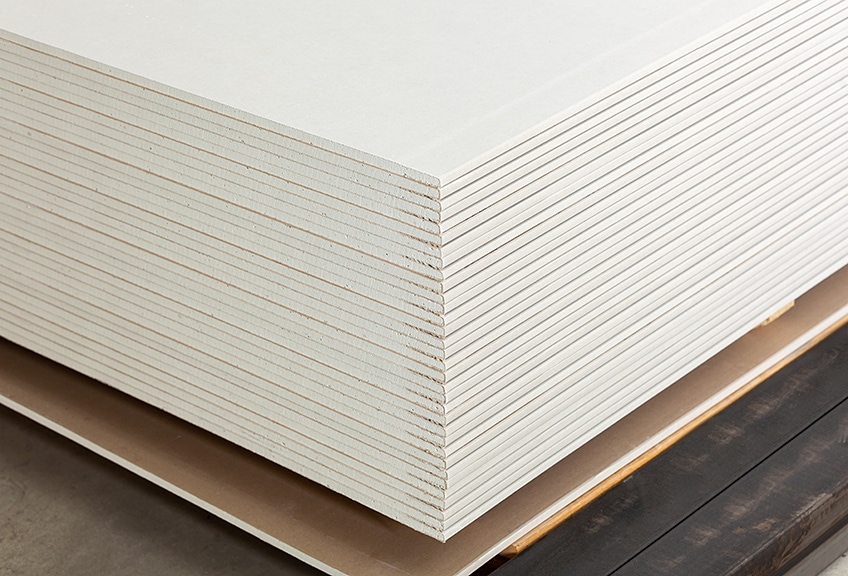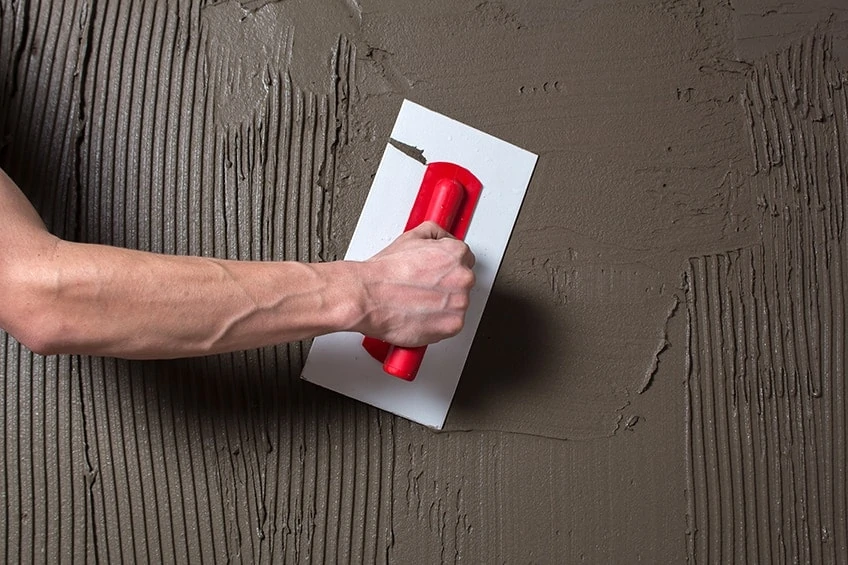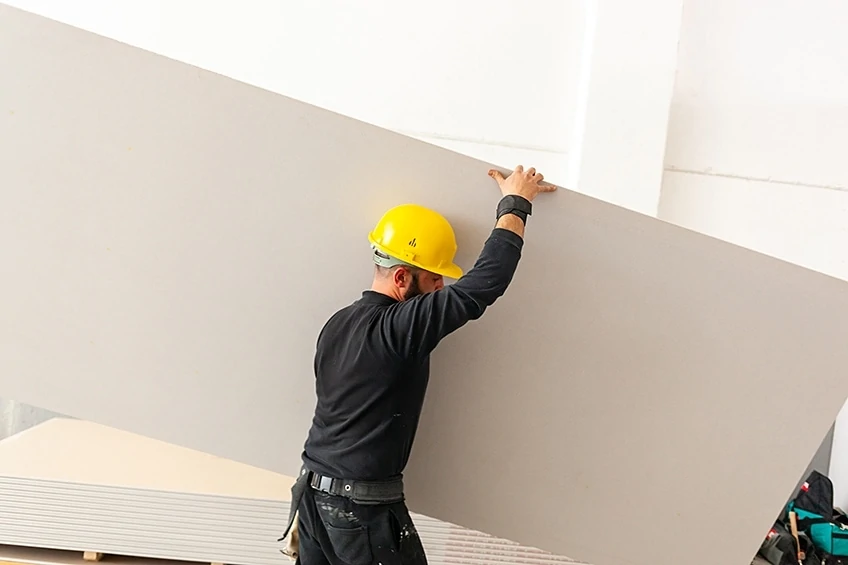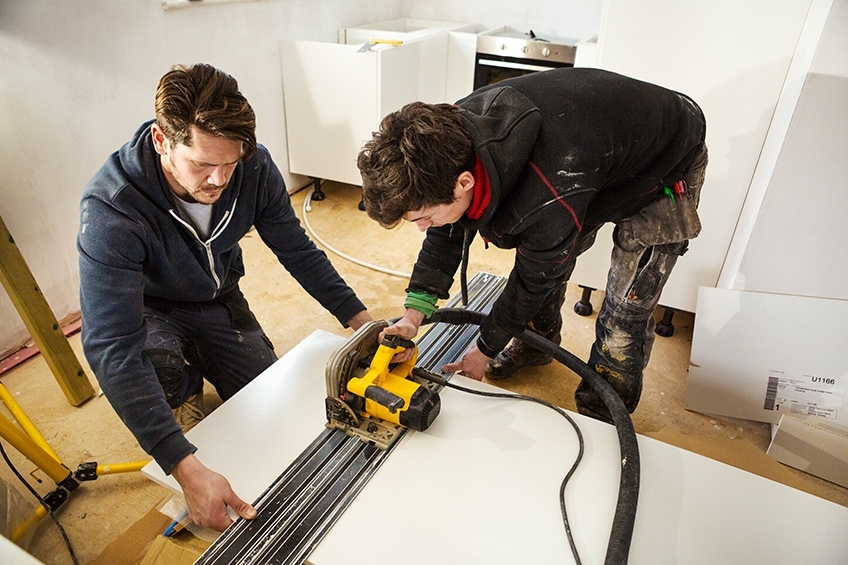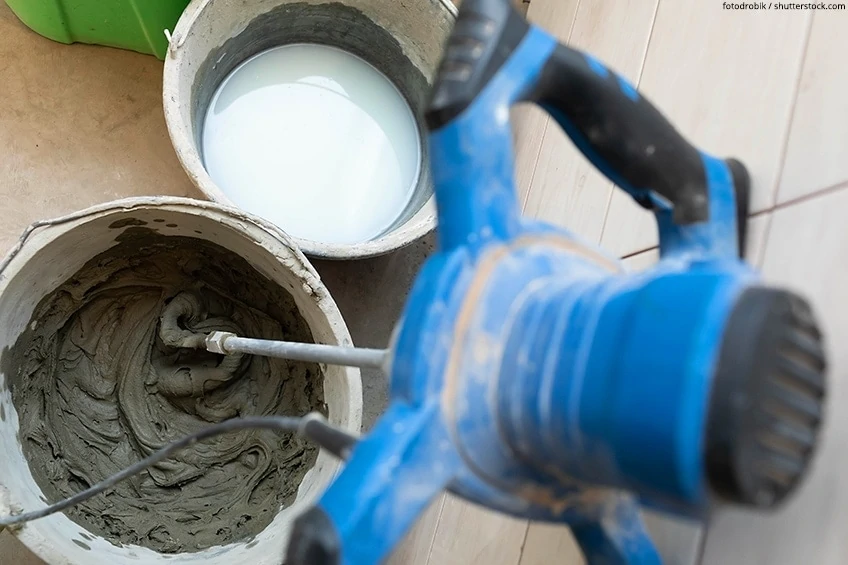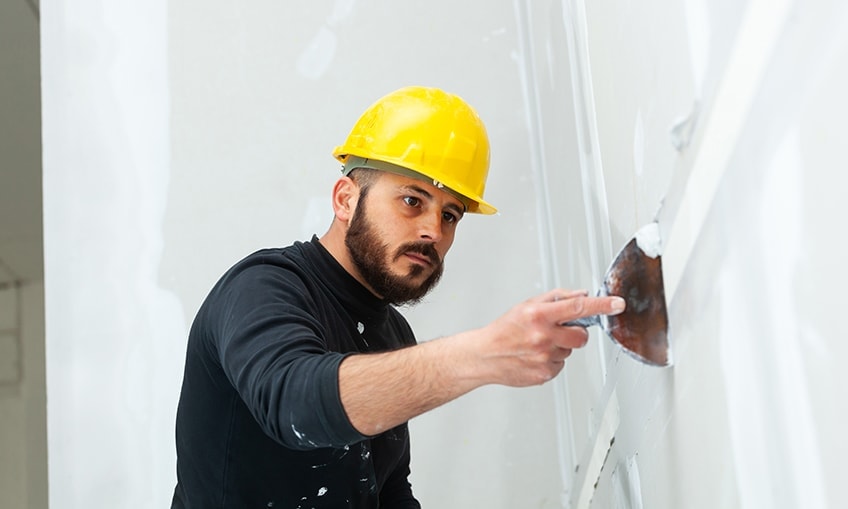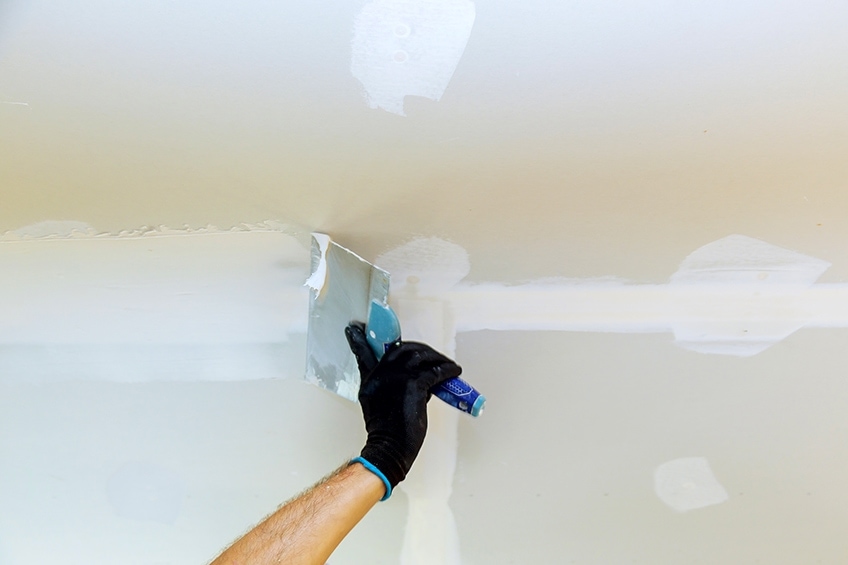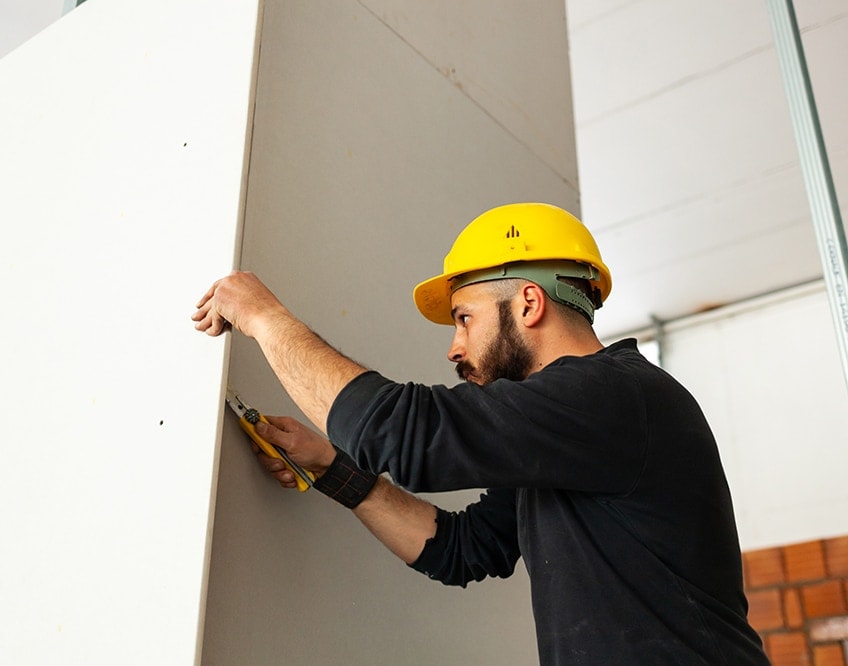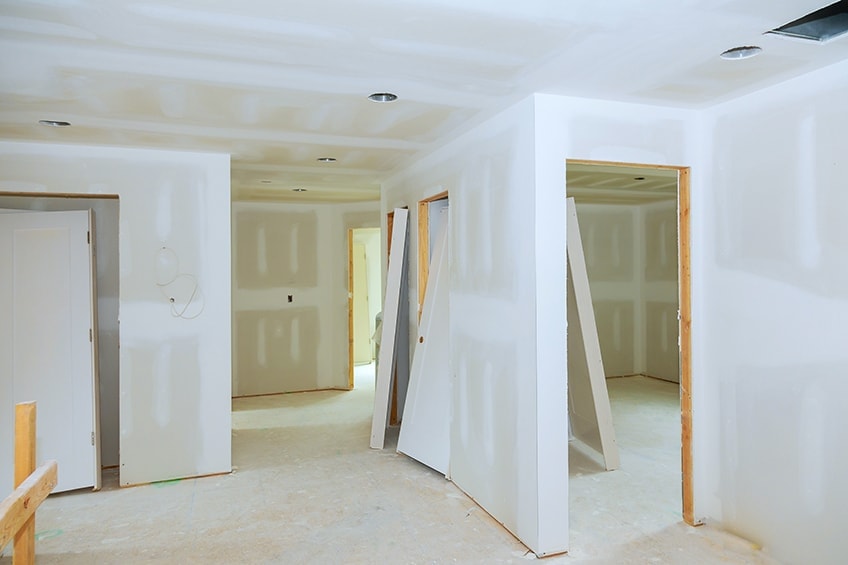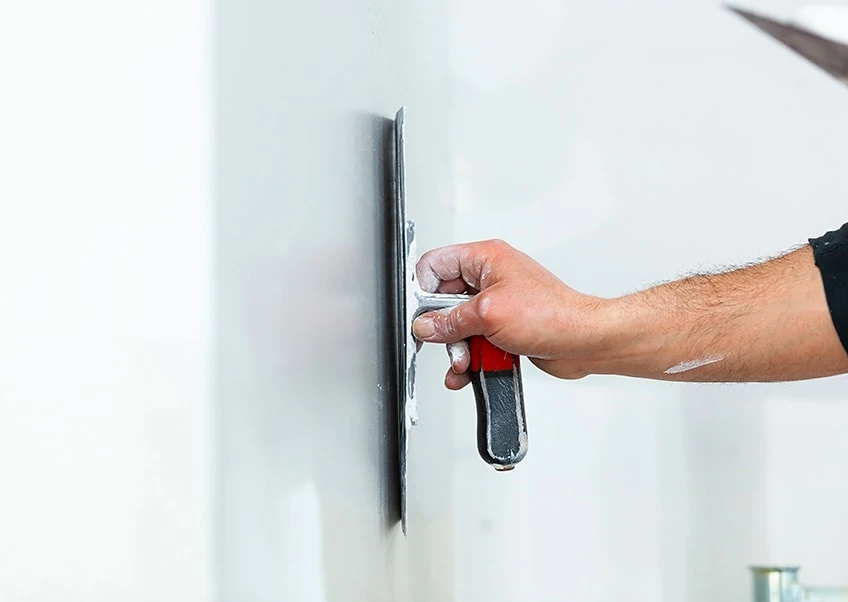Drywall Glue – Complete Instructions on Types of Drywall Adhesive
This post may contain affiliate links. We may earn a small commission from purchases made through them, at no additional cost to you. You help to support resin-expert.com
Today, sheetrock is one of the most popular materials for interior wall cladding. If you want to cover a wall with sheetrock, you have the choice between two methods: screwing and gluing. This guidebook will show you which one is better and which sheetrock glue you should use.
Table of Contents
What Is Sheetrock?
Rigips is a type of plasterboard made of gypsum and cardboard. The two together make a very stable and durable material that is used for finishing attics in particular, or generally in construction. Towards the end of the 19th century, Augustine Sackett patented plasterboard for the first time in the USA.
Industrial production began after the turn of the century. The name sheetrock originally comes from the name “Riga gypsum”, as the boards were manufactured in Riga for a long time. However, names such as Fermacell boards, drywall boards, or gypsum fiber boards also exist.
Sheetrock panels are usually applied to mineral substrates. They are used primarily for interior finishing and for cladding sloping roofs. Other areas of application include:
- Construction of lightweight, non-loadbearing interior walls
- Ceiling suspensions
- Dry screed
- Dry plaster
- Cladding of pipes
For these uses, they are often screwed. However, a now widespread alternative to screwing is sheetrock bonding through the use of a drywall adhesive.
Advantages and Disadvantages of Sheetrock
PROS
- High fire resistance: Rigips offers a high level of protection against heat-related damage and fire. Furthermore, special fire-resistant sheetrock is available that further increases protection against fire.
- Low space consumption: Especially in comparison to solid construction, Rigips does not take up much space.
- Optimal cutting to size: Sheetrock can be adapted to the respective conditions perfectly by simply cutting it to size.
- Low weight: The material is very light, which means that there is only a low weight load on the walls.
CONS
- Sheetrock is not resistant to moisture, so mold can easily develop. However, there is sheetrock available that can be used in damp areas.
- Due in part to its low resistance to moisture, sheetrock should not be used outdoors.
- Any joints to adjacent solid substrates must be insulated with felt or foam.
The Optimal Adhesive for Drywall and Plasterboard
The perfect plasterboard adhesive is either mortar or binder. Commercially available all-purpose adhesives are not suitable for gluing plasterboard to the wall, as the adhesive performance is far too low to support the weight of the boards permanently.
Priming binder is nothing more than a special gypsum mixture made specifically for sheetrock bonding. It can be purchased in large containers and simply mixed with water. It especially pays off when doing larger areas, because it is quite inexpensive.
Top Recommendation for Sheetrock Glue: LOCTITE PL Premium Construction Adhesive
This polyurethane-based construction adhesive offers an extremely strong and effective product. In fact, the Loctite brand boasts that this drywall adhesive is three times stronger than most other products, and that it has double the coverage. Thus, you can guarantee the best adhesion to both interior and exterior materials. This product is also resistant to water, dampness, and temperature fluctations. It can be painted, and it will cure quickly even in cold, wet environments.
- High performance urethane-based adhesive
- Waterproof, paintable, and cures even in cold temperatures
- Twice the coverage of conventional adhesives and 3 times stronger
PROS
- Extremely strong
- Great coverage
- Excellent adhesion both indoors and outdoors
- Waterproof
- Resistant to dampness and temperature changes
- Paintable
- Quick-curing
CONS
- Messy to use
- Can be tricky to work with
The Loctite drywall adhesive offers optimum quality at a reasonable price and therefore receives an enthusiastic purchase recommendation from us.
Next Best Drywall Adhesive: LIQUID NAILS Drywall Adhesive
This adhesive for drywall by the Liquid Nails brand is specially formulated for installing interior drywall and for correcting small irregularities in wall frames. This environmentally friendly product adheres quickly and strongly to the surface, and minimizes nail pops. In fact, this drywall adhesive is also resistant to moisture and works to buffer sound. Thus, this easy-to-use product is guaranteed to provide professional results.
PROS
- Eco-friendly
- Quick adherance
- Extremely strong bond
- Moisture-resistant
- Buffers sound
- Easy to use
CONS
- Requires a caulk gun for application
The only disadvantage to using this drywall adhesive by Liquid Nails is that you will need to purchase a separate caulk gun in order to apply it, although this is the case for many types of drywall glue. This product is easy to use and offers excellent value for money.
Instructions for Gluing Plasterboard
As an example, we would like to present the technique for the cladding of a wall with the help of plasterboard. There are several things that need to be taken into account. However, with the right know-how, this work is relatively easy to perform.
First of all, the wall that you want to cover with sheetrock should be straight and dry, because sheetrock adhesive cannot adhere well to a damp surface. In addition, a damp wall provides a perfect environment for mold spores. One of the most important points when you want to stick sheetrock to the wall is the surface preparation.
Surface Preparation
First of all, the roughest irregularities should be removed from the wall to which you want to glue the plasterboard. So, deeper cracks, gaps, and crevices must first be filled. However, the wall does not have to be completely flat. Smaller unevennesses may remain; they do not impair the bonding performance of the adhesive or the fit of the plasterboard. On the contrary: A good drywall adhesive is able to fill slight unevenness on a surface.
Furthermore, all old plaster residues must be removed. Of course, this should be done before filling the gaps. Use a spatula to scrape off smaller remnants. You can also sand a complete wall to remove the old plaster. After this, clean the walls of the sanding dust so as to improve the adhesion of the sheetrock glue. Very absorbent substrates still require a suitable primer before you cover the wall with sheetrock.
Cutting the Sheetrock
Measure the walls and cut the sheetrock to fit exactly. This will make your work easier later, because you will have all the plasterboard at hand. When cutting to size, proceed as follows:
- Draw the outline of the area to be cut out on the sheetrock. For long straight lines, use a ruler, a board, or a stop iron.
- Place this on the respective line and then begin cutting along it. You can use a sharp knife, preferably a cutter knife, for cutting.
- Now, you can easily break through the sheetrock at the cut edge. Again, place a stop iron or board for this purpose. Then cut through the cardboard on the back side with the knife as well.
- Pay attention to the front and back: Most manufacturers have the front slightly rounded. If this is not the case, note the surface coloring. The front side is pre-primed, i.e. white, while the back side has a beige color.
Edges that meet during gluing should be beveled. In addition, where the plasterboard meets a window or door, you should install a suitable edge protector made of plastic or aluminium. You should also lay these out before mixing the adhesive.
Mixing the Drywall Adhesive
If all the plasterboard is ready, you can mix the adhesive. This should be done very carefully, because the adhesive should not contain too much moisture. Because this would soften the cardboard coating and dissolve it over time. However, the drywall adhesive must also not be too dry, because in this case the bonding performance would be significantly impaired. Ensure a creamy consistency.
Use a mason bucket and pour cold water into it first. Then, sprinkle in the binder. Proceed slowly and always wait a moment to check whether there is enough water in the mason bucket. In the best case, you will have to add some binder, as adding water afterwards is not optimal for the quality of the binder. You may find that tile adhesive is easier to mix, as you can handle it more roughly. In this case, it is not important whether water is added subsequently.
Now, stir slowly and carefully with a stirring paddle so that not so many air bubbles are formed. After mixing, knock several times against the outer wall of the mixing vessel in order to remove the air bubbles that have formed.
Applying the Adhesive for Drywall
To speak of “applying the sheetrock adhesive” is actually inappropriate. This is because the adhesive is not spread, but slapped onto the wall in large portions. It is neither spread nor rubbed in. It is distributed only by the weight of the sheetrock, which is then pressed against the wall.
The application of the adhesive should be done with a lot of force so as to close the underlying wall pores as much as possible. So be sure to slap enough glue on the wall so that it spreads optimally. After applying the adhesive, the plasterboard can be attached.
Gluing the Sheetrock
The sheetrock is now attached with a precise fit and pressed tightly for a moment. If possible, mobilize a helper for this step, because working with the large and unwieldy plasterboard is much easier with two people. If you have to work alone, you should think about buying so-called one-man plates, which are easier to install because of their smaller size.
After that, immediately use a spirit level to check whether the panel was attached completely straight. If this is not the case, you need to press harder in the right place. You can also gently hit the plasterboard with the flat of your hand.
Finishing the Sheetrock
When you have lined the wall with the sheetrock, it still needs to be finished. This means that the resulting joints must be filled. If they are located on the wall, then also use plaster mass. Silicone is used for better sealing on the floor as well as on the ceiling of the room.
This can be spread simply with a finger so as to level the surface. Plaster mass, on the other hand, must first dry thoroughly and then be sanded until the wall is completely level. Once this is done, you can paint the wall or cover it with wallpaper.
Tips and Tricks for Gluing Plasterboard
Your own safety is an indispensable factor when working with sheetrock. Ensure adequate ventilation and wear both a respirator and safety goggles. This is especially important when cutting the boards, and also when sanding the old plaster, as there is a high dust load.
To achieve optimal interruption of sound, you can use a wedge to achieve a few millimeters of distance between the plasterboard, the ceiling, and floor. This will dampen disruptive noise well. Taking too much adhesive at a time should be avoided, as its working time is limited. Especially for inexperienced craftsmen, it is advisable to always mix a sparing amount of drywall adhesive. Otherwise, you will have to dispose of excess dried, adhesive, thus wasting money and resources.
Make sure that the edges are well rounded. If you neglect this step, sharp edges may break and ruin your straight surface on the wall.
Gluing or Screwing Gypsum Boards
You can either glue sheetrock to the wall or screw it on. Which option you choose depends, among other things, on the condition of the wall. This should be completely straight; in any case, it must not be crooked or have major irregularities. Furthermore, high porosity is an absolute exclusionary criterion for sheetrock gluing.
Moisture in the wall does not allow the adhesive to adhere, so even under these circumstances, sheetrock bonding is not applicable. In these cases, it is imperative to screw the plasterboard instead of gluing.
A variation of these options is by using a combination: If you have a porous wall, but prefer to glue the plasterboard over the entire surface, you can secure it with a few additional screws. If you do not use a rail for this, it is best to use screws with drive-in dowels.
Covering a wall with sheetrock by using adhesive is always useful if it is an interior wall in a small room. Because when gluing, unlike screwing, you do not need a substructure, which would additionally reduce the size of the room.
It should be noted that when gluing plasterboard, there is no possibility of additional insulation. For this reason, exterior walls without insulation are not suitable for it. In this case, you must first install pre-wall insulation. Furthermore, interior walls should also always be insulated.
Price, by the way, is not a valid argument for plasterboard bonding, since a lot of adhesive compound is needed to attach the sheetrock in a truly durable manner. However, it is usually much easier to accomplish.
Frequently Asked Questions
What Is the Best Sheetrock Glue?
Do not use commercially available all-purpose adhesive for sheetrock. For a really durable connection, you should use an assembly adhesive or bonding agent.
Can I Glue Sheetrock With Tile Adhesive?
Gluing sheetrock with tile adhesive is always recommended if you want to glue moisture-proof boards. In addition, tile adhesive is optimally suited for plasterboard bonding on exterior walls.
You can cover walls with sheetrock with relative ease by using either screws or glue. We would recommend using the glue or adhesive method where possible.


